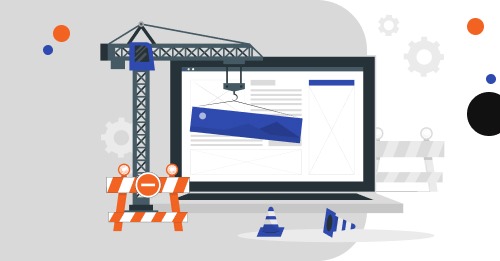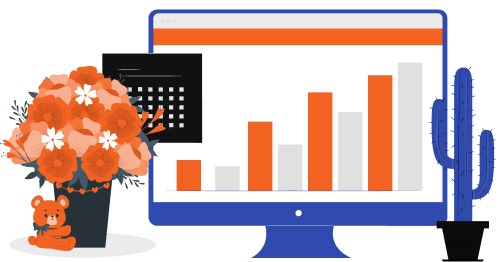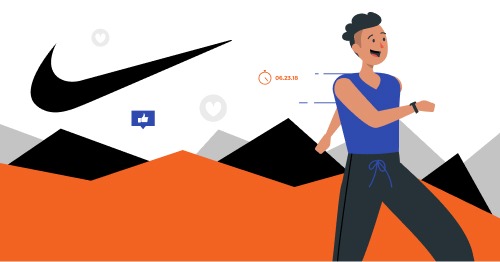The eCommerce landscape is thriving. The primary challenge isn’t just drawing in users, but ensuring they remain engaged. Over 90% of businesses today offer a loyalty program. Some examples like a Nike loyalty program set the standard for rewards programs – and it’s possible to replicate the same in your store.
Nearly every retailer offers a loyalty program, and it’s likely you belong to one or more of them. The formula is familiar: buy products consistently, accumulate points, and then exchange those points for discounts or complimentary items. At a glance, cultivating customer loyalty appears simple. But more often than not, it’s not the case.
In this article, we’ll delve into the art of shaping a loyalty scheme, taking Nike’s strategy as an ideal illustration. By the end, you’ll possess the knowledge needed to launch your own effective loyalty program.
- What Are the eCommerce Loyalty Programs?
- The Concept of Brand Loyalty in the Context of Nike
- Nike’s Loyalty Program: AI-Infused Excellence from a Global Brand
- Challenges for eCommerce Companies in Terms of Customer Retention
- Top Reasons Why Customer Loyalty and Retention Strategy Are Critical
- How Does The Nike Loyalty Scheme Work?
- The Core Secrets of Successful Nike Loyalty Scheme
- Types of rewards programs
- Ideas and Trends for Customer Loyalty Programs
- Summary: Building a Customer Loyalty Program
Get an eCommerce Expert Consultation
Our Adobe Business Practitioner will audit and optimize your site for robust performance.

What Are the eCommerce Loyalty Programs?
E-commerce loyalty programs are systems online retailers use to offer perks to their customers. Users accumulate points or benefits when shopping. The more they shop, the more benefits they acquire, which can be used for discounts or complimentary items, motivating them to revisit the platform.
Moreover, many eCommerce loyalty programs also offer benefits for various interactions, like writing product reviews, referring peers, sharing posts on social media, or even just registering or completing a profile. By offering benefits for a broad spectrum of user actions, they not only motivate purchases but also foster a deeper connection with the brand.
The success of such a strategy lies in its clarity and simplicity. Users should find it straightforward to understand how to gain points and their value.
The Concept of Brand Loyalty in the Context of Nike
Nike is one of the most valuable sports brands and a globally recognized trademark. Nike’s brand value made an astonishing $53 billion in 2023, and its yearly revenue surpassed $51 billion. Such remarkable success stems from the combination of innovative products and customer devotion, which together turn the brand into an icon. Nike’s loyalty program accounts for over 100 million members and continues to build a dedicated follower community.
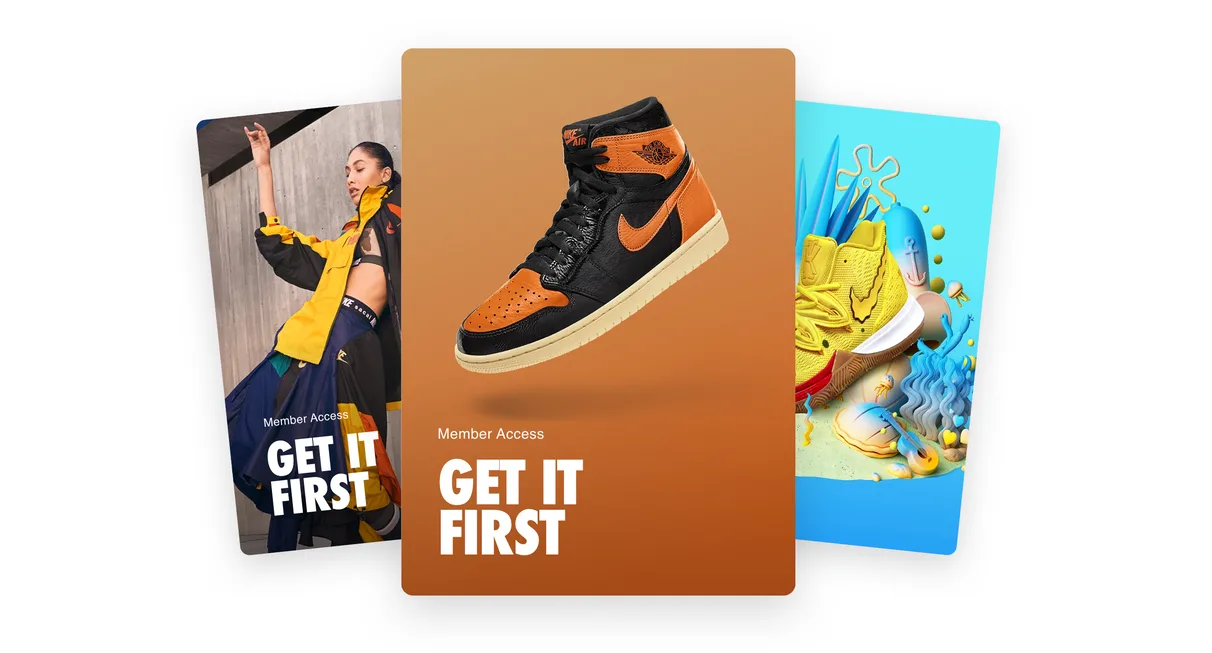
SOURCE: Nike Partnerships and Events page
The origination of Nike’s brand loyalty concept
Nike’s brand loyalty program, known as NikePlus, was introduced in 2005 as a way to reward and engage repeat customers. The program initially offered members access to exclusive products, early entry to sales, and personalized recommendations based on their purchase history and preferences.
Over the years, Nike has expanded and evolved its loyalty program to offer additional benefits and incentives. Loyalty cards and accumulated credits became a gateway to special promotions, birthday rewards, free shipping, and unique events. Over time, Nike has expanded its loyalty scheme with digital features, such as the Nike Run Club and Nike Training Club apps, which integrate with the loyalty program to offer tailored training plans and challenges.
Nike’s commitment to shaping a devoted adopter community was sparkling through every facet of its business activities. The brand’s exemplary marketing strategy showcases how to build strong emotional bonds with clients and turn a product into a lovemark.
Essential elements fueling Nike brand loyalty
So, which aspects of Nike’s culture help to continually expand its enthusiastic community of followers?
- Innovative products. Nike has a long history of innovation, constantly pushing the boundaries of athletic footwear and apparel design that meets and anticipates consumer needs.
- Iconic branding. Nike’s signature swoosh logo and memorable advertising campaigns consolidate its brand identity and resonate with consumers. Through powerful storytelling and aspirational messaging, Nike has inspired loyalty and admiration for the brand.
- Inclusive marketing. Nike has embraced diversity and inclusivity in its marketing campaigns, celebrating athletes of all backgrounds, abilities, and identities. This way, the brand has fostered a sense of belonging and empowerment among consumers, strengthening their connection to the brand.
- Community engagement. Nike actively involves its community in various events and initiatives. By supporting youth sports programs and investing in local communities, Nike has built meaningful connections with consumers, athletes, and fans.
- Innovative retail experience. Staying at the forefront of advanced technology, Nike invests in creating innovative and omnichannel retail experiences that blend physical and digital channels. From flagship stores to immersive online shopping, Nike offers consumers unique shopping journeys.
Nike’s Loyalty Program: AI-Infused Excellence from a Global Brand
Artificial Intelligence (AI) carries revolutionizing potential for industries, and those who adopt it efficiently will stay ahead of the curve. Nike has been in the avant-garde of implementing AI in various business activities.
How does AI contribute to Nike brand loyalty and the Nike loyalty program in particular?
AI-powered app
Nike brings personalization to a new level by crafting an app that can scan your foot with a smartphone camera and provide accurate shoe-fitting recommendations based on the obtained data. To attain this purpose, the app combines augmented reality technology and AI algorithms that continually learn and deliver more precise recommendations each time. This way, the app tackles the issue of ordering incorrect sizes.
Predictive analytics
Nike uses AI-powered predictive analytics to anticipate customer needs and behavior, allowing the brand to engage with members and offer relevant promotions and incentives. Intelligent algorithms accumulate user information through apps, including Nike Sneakers, Nike Training Club, and the Nike app. By analyzing collected data and trends, Nike can identify opportunities to delight customers, make product and design decisions, and take other strategic and tactical steps.
Chatbots and virtual assistants
Nike integrates AI-powered chatbots and virtual assistants into its loyalty program to provide personalized user support and assistance. These AI-driven tools can help members with inquiries, enhance searches, derive advice based on consumer behavior, manage orders, and more.
Customer engagement program
Artificial intelligence technology empowers a new level of personalization. By combining advanced apps, loyalty programs, loyalty cards, rewards, and omnichannel retail experiences, Nike exercises a tailored approach that is so praised by the modern audience.
Begin eCommerce Website Optimization
The structure of a website is akin to the foundation of a house. Lay a solid groundwork for your business's growth with a properly configured store.

Challenges for eCommerce Companies in Terms of Customer Retention
Retaining users for your eCommerce platform is as essential as bringing in new ones. Yet, ensuring user commitment hinges on multiple factors.
Here’s a look at potential hurdles:
- Market Dynamics: The online space is teeming with rivals presenting similar offerings. The vast options make it easy for users to switch preferences, underlining the need for retailers to differentiate themselves.
- Exceptional User Support: Without direct interaction, providing top-notch support becomes challenging. Users look for prompt and efficient solutions. Falling short can result in them leaving.
- Building Trust: Confidence is paramount for online shoppers. Since they can’t check out items firsthand, they rely on descriptions and feedback. Moreover, they need certainty that their personal and financial data remains secure.
- Customized Experience: Users want personalized shopping journeys. Retailers not meeting this expectation might lose customers to those that do.
Tackling these issues demands thorough interventions. A meticulously planned loyalty program for eCommerce can counter these challenges, differentiating you from the rest, cementing trust, providing customization, and bolstering user involvement.
Top Reasons Why Customer Loyalty and Retention Strategy Are Critical
Customer loyalty boosts earnings, enhances sales performance, and enables long-term growth.
A well planned and implemented loyalty program may assist you in retaining existing customers, attracting new customers, reducing attrition, and increasing revenues.
Almost six in ten UK adults agree that firms should provide loyalty programs, and nearly 60 per cent of internet users consider ‘winning rewards’ to be one of the most valuable components of the retail purchasing experience.
- Loyalty programs establish an emotional relationship. Customer loyalty and retention strategy enhance revenue and customer lifetime value. On the most fundamental level, this is accomplished through incentives. But there’s more going on here, and the emotional connection that loyalty programs build might be much more essential.
- Recurring customers have a high ROI. On average, a business owner spends five times as much to attract a new client as it does to keep an existing one. Current customers are 50% more willing than new consumers to switch brands and spend 31% more on each transaction.
- Customer loyalty and retention strategy allow you to reach out to new consumers. Solid client word-of-mouth is critical to gaining new consumers in the age of eCommerce and digital product reviews. In fact, personal suggestions are trusted by 83 per cent of customers, more than any other kind of marketing.
- Customer insights are provided through loyalty programs. When you digitize your reward program, you have access to real-time data on how your consumers interact with your program and your business as a whole. Access to this data allows you to create unique and successful tactics for strengthening not only your loyalty program, but also your brand as a whole.
- Creating a successful customer loyalty program has never been easier. A digitally enabled loyalty solution will be required if you want to grab the interest of modern buyers (and gain access to many of the perks highlighted in this article).
Get an eCommerce Expert Consultation
Our Adobe Business Practitioner will audit and optimize your site for robust performance.

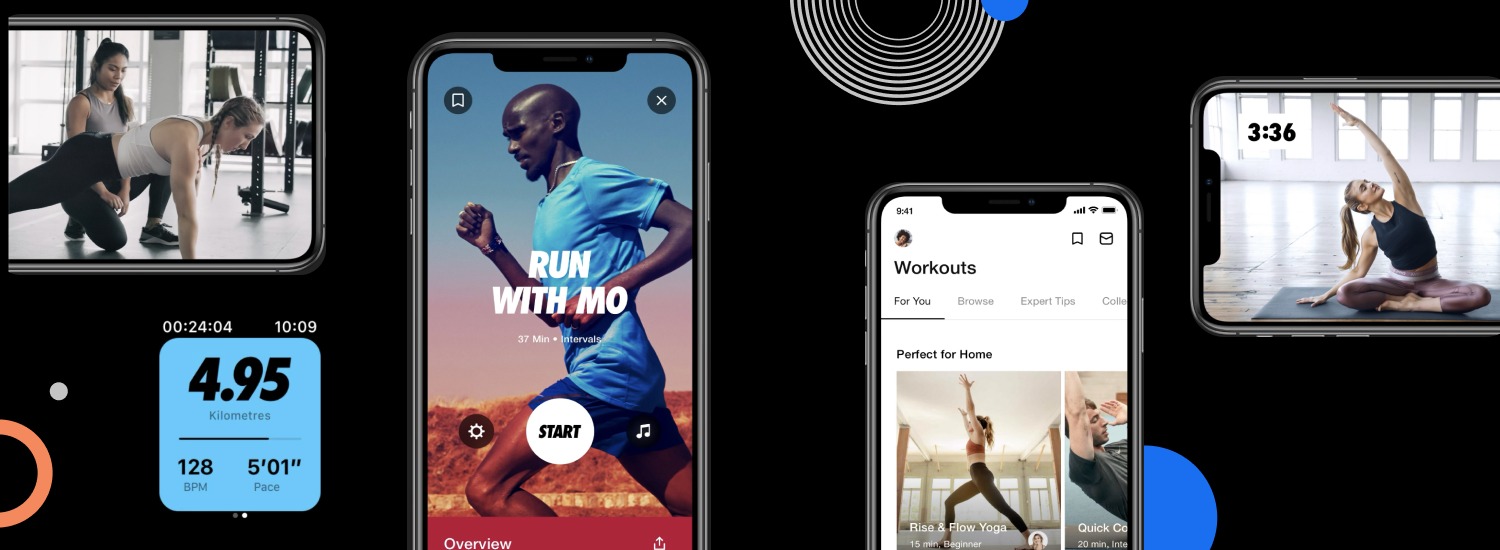
The entire program is distributed via apps and the Nike membership program. Fans may become members of one of the top retail loyalty schemes in the world by joining up on the official brand’s website. They may also join any of the four applications available, which include:
- Nike Run Club,
- SNKRS,
- Nike App,
- Nike Training Club.
Customers can monitor their accumulated credits and receive communications from the firm regarding members-only collections, among other perks. As a result, it is one of the greatest instances of a loyalty system.
So, what is a loyalty scheme from the perspective of Nike? Perks include:
- obtaining first dibs on tickets to sporting events,
- exclusive releases,
- early access to new releases,
- professional training guidance,
- incentives for app engagement,
- birthday offers,
The icing on this perks-filled dessert is free delivery.
Nike is ranked ninth in the world in terms of consumer brand loyalty. Nonetheless, it is one of the firms with the most devoted customers.
Let’s broaden the plan and see how it turns out.
How Does The Nike Loyalty Scheme Work?
Revamp Your Store with the Latest Magento Version!
Upgrade to the latest version, resolve compatibility issues, and leverage top-notch applications and integrations.

At the heart of the Nike loyalty scheme is a secret built on ideas such as omnichannel optimization, community development, exclusivity, and personalisation.
The Core Secrets of Successful Nike Loyalty Scheme
One of the primary advantages of becoming a Nike member is the availability of unique rewards. Loyal consumers get access to all of the fantastic things that the firm has to offer. They may shop unique member-only collections and receive things before they are released to the public.
Because of the exclusivity, the product is not easily accessible to everyone. With quality to back it up, the company can charge more for its products than competitors while still making a lot of money. 79% of Nike consumers said the special incentives are a big part of why they stick with the brand.
Exclusivity and rewards work well together to make the loyalty scheme ideas work. Adopting this scheme for your business can be done in the form of loyalty tiers that use a reward system to maximize engagement, sales and offer more perks as points accumulate.
Exclusivity
Another reason that Nike customers engage with the brand, is that they exist in a community that is tangible and useful. Users who join get access to free workouts, training instructions, and educational materials. The applications also provide articles about topics that the community finds interesting.
In what is one of the best loyalty schemes examples, Nike uses specific wording in ads. They also utilize call-to-action language to entice customers to become members and feel a sense of belonging. Almost half of all customers indicated they are more inclined to be loyal to a brand if they believe they are in the company of others who share their values.
The easiest method to achieve the type of engagement and community you want is to look for it on social media platforms where people are more inclined to spend their time. Putting the community first guarantees that you have clients who will connect with you and buy your items when they are announced.
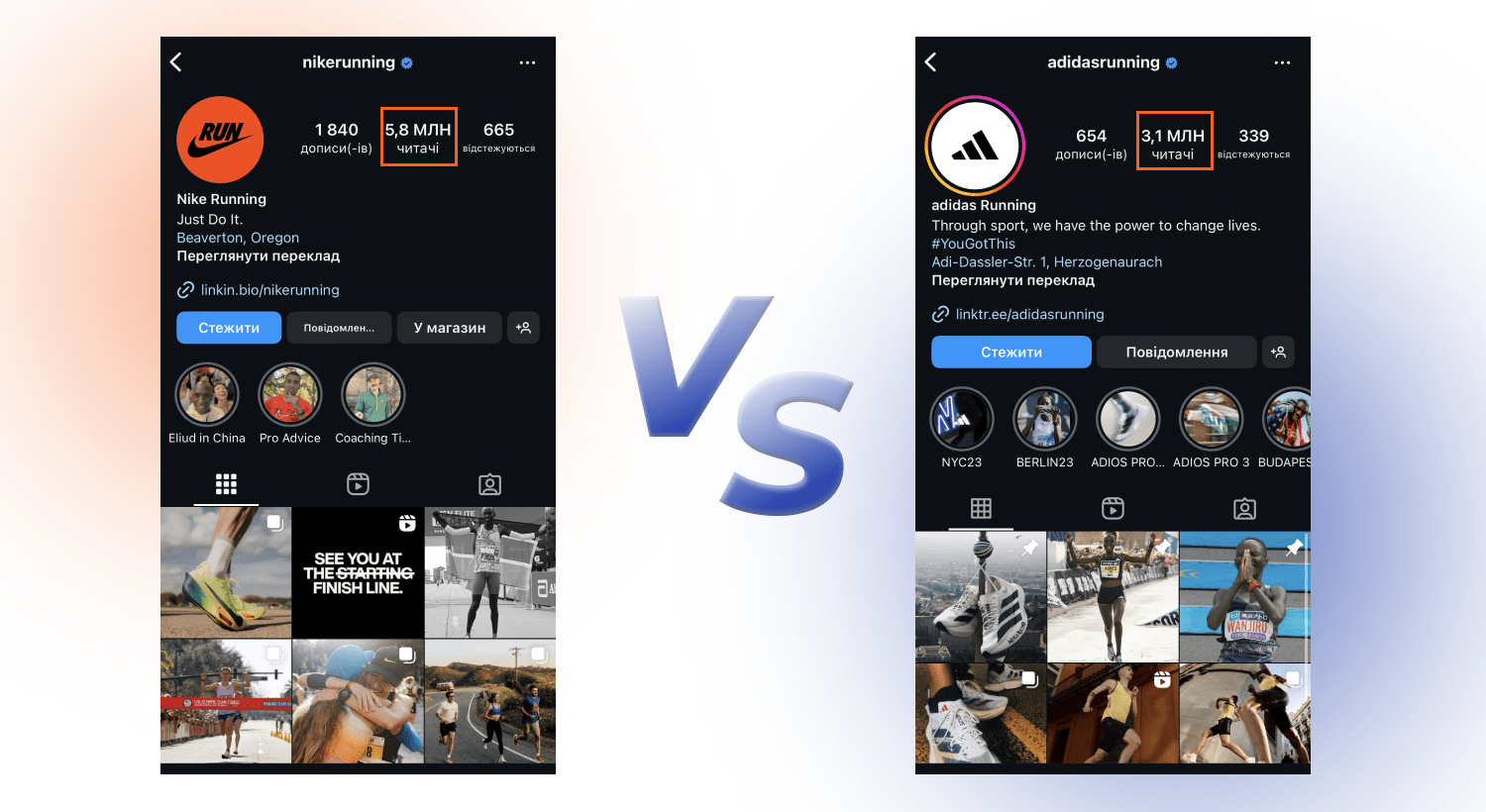
Nike Run Club’s followers on Instagram vs Adidas
Community
Many times, it has been stated that personalisation is the finest approach to make clients feel as if they have a personal connection with the business. When a brand remembers their birthdays and anniversaries and treats them to such occasions, 61 per cent of the public feels special.
Personalisation is what makes loyalty stick. Customers feel thoroughly understood and well-treated, rather than simply another casual shopper who will come and go.
Using the same method is as easy as surprising consumers with a fantastic greeting on their birthdays, and addressing them personally using their name. It may also entail sometimes providing them with unique bargains on something they may have desired in order to make them feel special and loyal.
Nike employs a one-of-a-kind points system that may be reproduced to reward customers who spend more and advance them to higher tiers.
Personalisation
One of the enticing aspects of the Nike Loyalty Scheme is its robust omnichannel strategy, which links members’ mobile applications at all times, even while they are shopping in a store. They may then use the same login for all apps and websites.
Ease of access and integration of all activities to track points and deliver rewards appropriately is a terrific approach to keep your consumers coming back.
Customers can have their loyalty profiles scanned when purchasing in-store. The system is designed in such a way that consumers’ loyalty may be recognized by Nike regardless of the technique they use. A smooth omnichannel experience makes it easier to account for loyalty and reward it in a deserving way.
Omnichannel Experience

Types of rewards programs
Your strategy’s design will hinge on your market and target audience. Here are some methods to consider:
- Points System: The thrill of accruing points and aiming for perks keeps users coming back.
- Tiered Benefits: Regular users receive exclusive deals and premium services from eCommerce stores, showcasing appreciation and making committed users feel treasured.
- Cash Benefits: Cash returns are a strong gesture, implying that retailers cherish user commitment.
- Purchase Cards: These types of rewards programs offer a complimentary item after a set number of purchases.
- Membership Perks: They create an elite group, granting members the best deals or unique items, enhancing user involvement.
- Philanthropy Points: Users feel good knowing their purchases aid noble causes, deepening the bond.
If you are wondering how to create a loyalty program, start by thinking of its type. Pick the one that best ensures users of your commitment to quality and value. Adapt your strategy to your user’s desires and tastes, nurturing strong bonds, encouraging repeat buys, and carving a distinctive presence in the fiercely competitive digital space.
Gaining customer loyalty is on the rise as more companies rush to establish relationships with customers. The shift happening now is giving birth to new trends, which have interesting propositions and approaches that answer the question; why is the Nike loyalty scheme a success?
Ideas and Trends for Customer Loyalty Programs
The most significant development in this market segment has been the implementation of emotional and behavioural-based loyalty programs. Traditional models in paid/subscription services such as Amazon Prime were driven by transaction-based models and behavioural models.
Emotional loyalty, on the other hand, has produced greater outcomes and lasted longer due to the stronger bonds built between a brand and its clients.
An emotional element incentive, as opposed to merely rewarding customers after they make a purchase, is all about addressing the question, “Why should I pick your product?” Gallup research reveals that when firms employ micro-engagements, personalization, data-driven choices, individualised rewards, and a seamless customer experience, strong emotional connections are developed.
Emotional and Behavioural-Based Loyalty Programs Are On The Rise

Not only does the omnichannel approach benefit the brands, but it also offers great benefits to the customers. Making the experience seamless, easy-to-navigate, and convenient leads to higher conversion rates, improved returns on investment, more sales, and better customer retention rates.
Our current future is more linked than mankind has ever been. As time passes, the relationships will become more interwoven and deeper. The Internet of Things (IoT) is generating connections that ensure customers may be rewarded regardless of where they spend, whether in a physical store or online.
Start by digitising your loyalty programs so that you can offer rewards across all channels and allow shoppers the opportunity to pick a channel that works best for them. With recent advances, connecting all of your channels is now easier than ever.
Omnichannel Reward Programs Will Be the Standard
The emergence of data-driven decisions has resulted in more efficiency and overall better results. Integrating data with machine learning models automates the processes, eliminating the need to go through mounds of data to determine who has a birthday and when to reward them.
The entire process can be automated and protected via blockchain, so clients know they will never lose their loyalty points for the rest of their lives. With blockchain, the loyalty rewards can all be aggregated and channelled into a wallet of redeemable points with value.
Many of the loyalty programs can be automated and optimized in a way that produces the best responses from the target audience. Before you adopt the ideas wholly, run pilot programs to see success rates before making programs generally available in your overall customer loyalty and retention strategy.
The Role of Big Data, Machine Learning, AI, and Blockchain
Brand interaction is becoming more mobile-focused than ever before. The reason for this is that more people are buying on their phones, checking out things on the move, and overall spending more time on their phones than on any other device.
The basis for focusing on mobile is that people carry it with them at all times and can get all of the benefits via mobile applications, while also providing marketers with the opportunity to directly interact and target customers in a tailored manner.
Although 84 percent of merchants provide a mobile loyalty experience, just 22 percent display loyalty points/rewards on the home screen. Experts call mobile the bridge between offline and online experiences by integrating engagement with mobile apps when customers make in-store purchases.
Mobile Loyalty Apps Will Continue to Gain Popularity
Personalisation just by names is not enough, which is why hyper-personalization is the name of the game. If the customer feels like your competition knows them better than you do, you will lose them.
As AI technology hits new milestones every year, hype-personalization does not have to be a hassle. It can be a mostly automated process where your only input is deciding what kind of format you would like it to follow.
Loyalty programs can be used to personalise the customer experience while generating the kind of customer insights that a brand needs. Purchase history, product preferences, and redemption of points can all be tracked to make your marketing strategies even better and more informed, like the Nike loyalty scheme.
Hyper Personalisation Will Separate the Leaders & Laggards

Nike loyalty scheme, as well as other big-brands’ loyalty programs, may be used to inspire your retention strategy, establish long-term loyalty, and expand your ecommerce business. More data-driven and AI-driven models will be used in loyalty programs in the future years. They will make it simple to interact with your consumers at scale without the need for more staff or responsibilities.
We’ll see programs shift away from the old, analytical, emotionless approach and toward a more flexible strategy that focuses on the individual buying the goods and their emotions.
To that aim, WebMeridian provides all-in-one services for businesses seeking a more personalized approach. This is what customers are thinking about when they come up with loyalty plan concepts and programs. We can provide both offline and online companies with the force they need by basing the plans on what is emotionally significant. We can provide both offline and online businesses with the force they need to keep their clients for a long time by basing the plans on what is emotionally significant.
We work with companies of various sizes, and among our clients are well-known brands with a long track record of success.
Contact us to implement an efficient and reliable client loyalty program, and get started right away.
Summary: Building a Customer Loyalty Program
The RAPID loyalty method consists of three measures, each of which evaluates one of three aspects of customer loyalty: RLI (Retention Loyalty Index): The extent to which consumers will stay clients or leave to rivals; includes loyalty issues such as: renew service contract, leave to competitor (reverse coded).
Retention is the percentage of existing customers who continue to do business with you. Loyalty assesses a customer's proclivity to choose a corporate entity as a preferred option and suggests a degree of resistance to competition.
The total cost of the Magento eCommerce website includes developers’ hourly rates (30$-60$) as well as the scope of work required. Let’s take a look at the tasks that your online business will require: Step #1Requirements Investigation Stage (it usually takes nearly 20-40 hours); Step #2. Design of the Project’s Architecture (nearly 40-80 hours); Step #3. Installation of Magento 2 (1-2 hours); Step #4. Implementations of the Backend (needs at least 200 hours and depends on customisations you may need); Step #5. Implementations of the Frontend (starts from 200 hours); A project of this nature should take between 1000 and 2000 hours to complete.
What customisation encompasses as an action. Customisation is required if you need to rebuild or replace particular default features for your company’s needs. This necessitates more developer effort and may be accounted for as extra development hours. You may change the theme, modules, and shop features like goods, orders, search, login, and checkout. You may also contact us to adapt any feature for your shop and enable you to understand the prices based on our estimates. A tailored solution ensures that you do not squander money on features and capabilities that you do not require.

